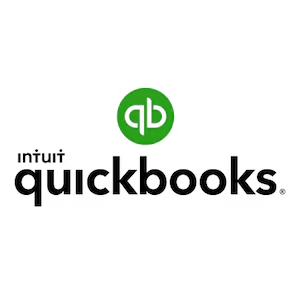
Welcome to QBStarter! If you’re new to QuickBooks or considering using it for your business, you’re in the right place. In this article, we’ll take you through everything you need to know to get started with QuickBooks in a simple, step-by-step way.
What is QuickBooks?
QuickBooks is an accounting software designed to help small and medium-sized businesses manage their finances. Whether you’re a freelancer, a small business owner, or a large enterprise, QuickBooks helps you track income, expenses, payroll, and other financial tasks with ease.
Why do people use QuickBooks?
QuickBooks is popular because it simplifies financial tasks, reduces errors, and saves you time. Here’s why millions of people trust QuickBooks for their accounting needs:
- User-Friendly Interface: You don’t need to be a financial expert to use it.
- Cloud-Based: Accessible from anywhere, making it perfect for remote work.
- Comprehensive: Handles everything from invoicing and payroll to tax reporting.
- Automated: Reduces manual work by automating tasks like invoicing, bill payments, and reporting.
- Secure: QuickBooks protects your data with top-notch security features.
Why You Should Use QuickBooks
Here’s why QuickBooks is a great tool for managing your business finances:
- Save Time: It helps you automate many of the tasks that take up time, like tracking expenses, creating invoices, and handling payroll.
- Avoid Mistakes: QuickBooks helps you reduce human errors that often occur in manual accounting processes.
- Get Organized: All your financial data is in one place, making it easier to track your cash flow, profits, and losses.
- Prepare for Taxes: QuickBooks generates reports that make tax filing simpler and more accurate.
Steps to Get Started with QuickBooks
Getting started with QuickBooks is easy! Follow these simple steps to set up your account and begin using it for your business.
Step 1: Sign Up for QuickBooks
- Go to the QuickBooks website.
- Choose the plan that works best for you. There are different versions like QuickBooks Self-Employed, QuickBooks Online, and QuickBooks Desktop.
- Click “Sign Up” and create your account. You’ll need to enter your email and set up a password.
- Follow the prompts to add your business details, such as your business name, type, and tax information.
Step 2: Set Up Your Business in QuickBooks
- Enter Your Business Information: Once you’ve created your account, you’ll be prompted to enter details about your business, including the name, address, and type of business (sole proprietorship, LLC, etc.).
- Link Your Bank Account: QuickBooks allows you to link your business bank accounts and credit cards. This will help you automatically import transactions and track your spending.
- Customize Your Settings: You can set up preferences such as your default currency, tax settings, and invoice templates.
Step 3: Learn Basic Features of QuickBooks
QuickBooks offers a range of features, but as a beginner, you should focus on these core functionalities:
Invoicing
QuickBooks makes it easy to create and send professional invoices. Here’s how:
- Go to the Sales tab.
- Click on Create Invoice.
- Fill out the details (customer name, products/services, amount).
- Click Save and Send.
Expense Tracking
QuickBooks automatically imports transactions from your bank account, so you can easily track expenses. To add an expense manually:
- Go to the Expenses tab.
- Click Add Expense.
- Enter the amount, category, and vendor.
Reports
QuickBooks automatically generates reports for you. To view your financial reports:
- Go to the Reports section.
- Choose from various reports, such as Profit and Loss or Balance Sheet.
- QuickBooks will update these reports in real-time as you add transactions.
Step 4: Using QuickBooks for Payroll (Optional)
If you have employees or contractors, QuickBooks can also help you manage payroll. To get started with payroll:
- Go to the Payroll tab.
- Follow the prompts to add employee details and pay schedules.
- QuickBooks will automatically calculate wages, taxes, and deductions.
Tips for New QuickBooks Users
Here are a few tips to help you make the most out of QuickBooks:
- Start small: Don’t try to set up everything at once. Begin by tracking your expenses and income, and then gradually add other features like payroll and invoicing.
- Stay organized: Keep your receipts and records up-to-date to ensure QuickBooks has all the information it needs to generate accurate reports.
- Use reports regularly: The key to understanding your business’s financial health is reviewing your financial reports. QuickBooks generates reports automatically, so make sure to check them regularly.
Conclusion
Getting started with QuickBooks doesn’t have to be overwhelming. By following the steps above, you’ll be able to set up your account, track your finances, and start managing your business with ease.
Remember, QuickBooks is a powerful tool, and the more you use it, the more you’ll learn about all the features that can make your financial management simpler. Whether you’re a freelancer or a small business owner, QuickBooks can help you stay organized, save time, and avoid mistakes.
